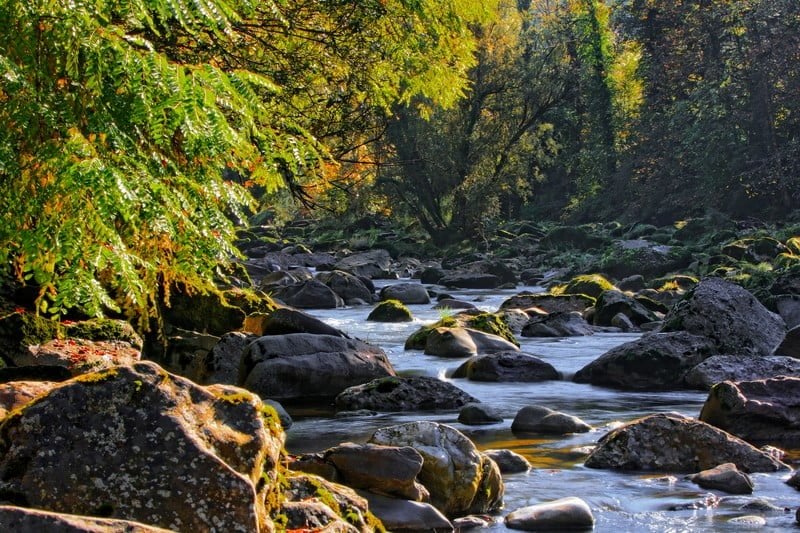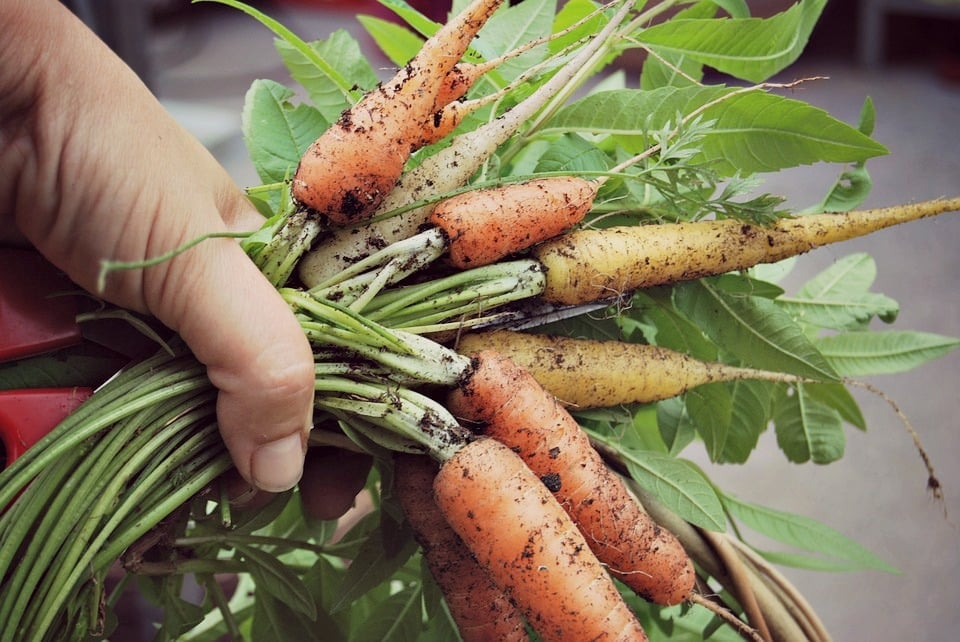How To Keep Our Environment Clean For Grade 2
With environmental issues like water contamination, pollution, and climate change, it's natural to look for ways we can reverse the damage to our planet and keep our environment clean. Many of us think we're too small to make a difference, but when enough of us take action, we've seen the positive results we can create.
Today we're looking at the steps – big and small – you can take to keep our environment clean and safe.

How to Keep the Environment Clean and Safe
Make your voice heard: vote, sign petitions, contact your leaders
Your state and local representatives need to hear from you. Never doubt – they're hearing from special interest groups and big businesses with big money. There are several steps we can take in our individual lives, but let's face it… your home can't possibly pollute or waste resources on the same scale as a large factory or corporation.
Here are a few ways you can voice your concerns and ask that corporations are held to standards that protect our planet and keep our environment clean and safe:
- Write a letter to your local newspaper.
- Attend your city council meeting.
- Find out who your Representatives and Senators are. Go to their websites, sign up for their newsletters, find out where they stand on issues you care about.
- Take a look at Get Involved: Index of Organizations, a list of nonprofit organizations, by topic, that are working to create fundamental change by educating the public and engaging citizens in grassroots initiatives.
Refuse single-use items (especially plastic)
Straws, to-go cups, disposable razors, and plastic grocery bags are some ubiquitous examples of single-use products in our economy. Finding a reusable option for these items we use once and toss is a simple way to make a big difference.
See Also: The Top 15 Steps to Going Green
While replacing all single use products with reusable products is best, it can be overwhelming at first. To get started, Lauren at Minimal Domesticity says to consider whether the product will be used for more than an hour.
If, like a plastic grocery bag, the product's useful life is less than an hour, try replacing it with a more sustainable alternative.
One of the best ways to avoid these products is to refuse them before they enter your life. This is how you vote with your dollar. Unsubscribe from mailing lists and catalogs, bring your own bag, order a drink with no straw, and decline unnecessary receipts.

Buy locally, eat more plants, and compost your food waste
When shopping, focus on purchasing locally grown products rather than imported goods. Buying locally means less transportation, processing, and packaging. And when it comes to food – local means fresh… which tastes so much more flavorful.
Find your local CSA through Local Harvest and join. Or try your hand at gardening with the 10 Easiest Vegetables to Grow from Seeds. You won't have to make as many frequent trips to the market if you plant vegetables and fruit trees in your very own backyard.
Eating more vegetables and fewer factory-farmed meats helps reduce greenhouse gases. If your family eats meat, try decreasing your serving sizes and letting the vegetables take center stage on your plate. And when you purchase meat, be sure to buy it from a reputable grass-fed source without hormones or antibiotics.
Remains of plants and kitchen waste make rich nutrient filled food and manure for plants, helping them grow faster. This process is known as composting. Instead of throwing away food and wet waste, you can now use it for the plants in your own home garden.
Composting reduces the volume in our landfills. Municipal solid waste buried in a landfill doesn't get enough oxygen and will produce methane. A compost pile, on the other hand, undergoes aerobic decomposition. Because it is exposed to oxygen, either by turning it or through the use of worms and other living organisms, it produces carbon dioxide instead of methane.
Plant trees and landscape with native plants
Green living areas in our cities and suburbs are vital. Industrialization and suburban sprawl have taken away the trees – our main source of unadulterated oxygen. They're also beautiful, and they do their part to keep our environment clean.
By planting a tree today, you can make green space and unadulterated oxygen a reality for our kids. The same goes for landscaping with native plants. Not only are they low maintenance, they conserve water, reduce carbon pollution, and support the health of local wildlife. If you don't have your own lawn, you can donate a tree.
Green your transportation and travel habits
As much as 90% of road transportation in the U.S. is dependent upon oil. When you walk, bike, or take public transportation, you'll reduce your carbon footprint significantly. If you must drive, make your errands at less busy times of day so you won't sit in traffic wasting gas. And try to consolidate your outings – being conscious of how many separate trips you can prevent (this also saves time).
When it comes to vacations, opt for local destinations. Why not see all the beautiful natural resources your own town or state has to offer? If you must travel by air, consider buying carbon credits to offset the environmental impact.
Conserve water
With industries dumping waste into our water supplies, our access to fresh, clean drinking water is dwindling. Running taps, long showers, running the dishwasher half-full, and unchecked water leaks examples of unnecessary water waste. Try rainwater harvesting in buckets or a rain barrel which can be used to water the plants in the lawn, clean your cars etc.
Reduce use of chemicals & properly dispose of waste
Instead of purchasing disposable items like plastic plates, spoons and cups, opt for reusable, washable flatware instead. Get an extra set at Goodwill. It doesn't matter if they match. For on-the-go coffee lovers, carry your reusable travel mug to the coffee shop. With this small, simple act, you reduce the amount of trash you're disposing and your coffee remains hot while doing so.
Many industries dispose of their oil, paint, ammonia, and other chemicals openly. This is hazardous to water and air as these chemicals are soaked into the groundwater.
When all of these chemicals combine, it's no wonder cancer rates have skyrocketed. Support regulations and incentives for companies to keep our environment clean. Agriculture is also a known polluter when it comes to chemical runoff. And when it comes to your own back yard, avoid over-fertilizing to make sure you're not contributing to algae blooms from runoff.
Choose natural cleaning methods, environmentally-safer paints, and recycled or nontoxic home improvement materials to keep your indoor air cleaner (and naturally fresh) and your waste less harmful.
Fall in love with Mother Nature
"There is mounting research that supports the idea that children [and adults] who spend regular time playing and learning in the natural world are happier, healthier, smarter, more creative and better problem solvers," shares Janice Swaisgood, Children & Nature Network's National Coordinator of Nature Clubs for Families.
Essentially if we want to be inspired to protect our natural resources, we must fall in love with nature. Go out and wade in a spring, swim in a lake, and walk or play on the beach. Put down your phone, and go outside to see what kind of birds and butterflies are fluttering about your yard. When you find a bird nest and observe (not interfere) with the hatching, growing, and finally flying away… you develop an intrinsic vested interest or ownership in the natural world.
Striking a balance between ethical development and a healthy environment may take decades, even centuries. But together, we can become better stewards of this planet we share as our home.
Additional Resources for Reducing Your Impact and Keeping Our Environment Clean
30 Simple Ways to Reduce Your Impact on the Environment article by Lisa Borden
Plastic-Free: How I Kicked the Plastic Habit and You Can Too book by Beth Terry
10 Ways to Reduce E-Waste article by Abigail Smith
The Dangers of Endocrine Disruptors & How to Avoid Them
Top Tips for Green Travel with Kids
Bringing Environmental Issues into the Classroom article by Tanyette Colon
10 Reasons Children Need Vitamin N
The National Wildlife Foundation Non-profit Organization
Balloons Blow Non-profit Organization
National Environmental Education Foundation Non-profit Organization
- Author
- Recent Posts

Since 2010, Green Child has published an award-winning publication devoted to natural parenting and conscious living. Noted as "good for a green mama's soul," Green Child has grown into a resource valued by parents who care about bringing simplicity, compassion, social responsibility, and instinctual intelligence back to parenting.

How To Keep Our Environment Clean For Grade 2
Source: https://www.greenchildmagazine.com/7-eco-friendly-tips-to-keep-the-environment-safe-and-clean/
Posted by: philipstheares.blogspot.com

0 Response to "How To Keep Our Environment Clean For Grade 2"
Post a Comment